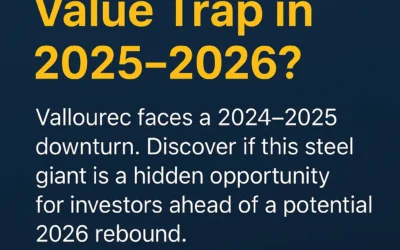Introduction
In modern portfolio theory, managing risk isn’t just about diversification or minimizing volatility. It’s about understanding where the risk comes from. That’s where Contribution to Risk (CTR) and Risk Budgeting come into play. These powerful tools help investors and asset managers allocate risk more intelligently, reduce hidden fragilities, and improve performance consistency.
By quantifying the portion of total risk each asset contributes, we can identify overexposed positions and rebalance proactively. Let’s explore how.
What Is Contribution to Risk?
Contribution to Risk is a measure that shows how much each asset contributes to the overall risk (volatility) of the portfolio.
In a portfolio, not all assets contribute equally to total risk. Some may look small in weight but contribute disproportionately to risk due to high volatility or strong correlation with the rest of the portfolio.
Formula:
If we define:
– σp = total portfolio standard deviation
– wi = weight of asset i
– σi = standard deviation of asset i
– ρi,p = correlation of asset i with the total portfolio
Then:
CTR_i = wi × σi × ρi,p ÷ σp
Real-World Example: Simple 2-Asset Portfolio
Suppose you hold a portfolio with:
– 60% in Stock A (highly volatile)
– 40% in Bond B (low volatility)
Even though Stock A is only 60% of the portfolio, it might contribute 90% of the total risk, depending on its volatility and correlation.
This is why risk contribution is more meaningful than just portfolio weights.
What Is Risk Budgeting?
Risk Budgeting is the process of setting a target or limit for how much risk each part of the portfolio is allowed to contribute.
Rather than allocating capital equally, we allocate risk budgets to assets, sectors, or strategies. For example:
– Equities: max 50% risk contribution
– Bonds: max 20%
– Alternatives: max 30%
This allows for risk-based portfolio construction, which can outperform traditional methods under volatility regimes.
Use Cases in Portfolio Management
1. Enhanced Diversification: You may think you’re diversified, but if 80% of your risk comes from tech stocks, you’re not.
2. Rebalancing Decisions: Assets contributing too much to total risk can be trimmed. Under-contributors can be increased.
3. Comparing Portfolios: Risk contribution profiles help you compare portfolios with the same return but different fragilities.
4. Risk Parity Strategy: Some funds aim for equal risk contribution from all components. CTR is foundational in such strategies.
Common Pitfalls to Avoid
– Ignoring correlation: Even low-volatility assets can contribute more risk than expected if they’re highly correlated.
– Relying only on weights: Capital allocation != risk allocation.
– Over-optimizing: Too frequent rebalancing can lead to high transaction costs and tax inefficiencies.
Tools and Software
Contribution to Risk and Risk Budgeting are available in tools like:
– Bloomberg PORT
– MSCI Barra
– RiskMetrics
– Python (via NumPy, Pandas)
– Excel (using covariance matrix and portfolio weights)
Final Thoughts
In volatile markets, capital-weighted diversification isn’t enough. Knowing which positions are making your portfolio fragile is the key to sustainable returns.
By mastering Contribution to Risk and implementing Risk Budgeting, investors can move from reactive to proactive portfolio management.
Free Newsletter CTA
Get exclusive trading alerts, investment tips and in-depth financial insights by joining our free newsletter.
Stay ahead of the market. Manage risk intelligently. Be part of the bullish side.
Discover More
For more insights into analyzing value and growth stocks poised for sustainable growth, consider this expert guide. It provides valuable strategies for identifying high-potential value and growth stocks.
We also have other highly attractive stocks in our portfolios. To explore these opportunities, visit our investment portfolios.
This analysis serves as information only and should not be interpreted as investment advice. Conduct your own research or consult with a financial advisor before making investment decisions.
Looking to Educate Yourself for More Investment Strategies?
Check out our free articles where we share our top investment strategies. They are worth their weight in gold!
📖 Read them on our blog: Investment Blog
For deeper insights into ETF investing, trading, and market strategies, explore our library or go to Lulu.com for each guide:
📘 ETF Investing: ETFs and Financial Serenity
📘 Technical Trading: The Art of Technical & Algorithmic Trading
📘 Stock Market Investing: Unearthing Gems in the Stock Market
📘 Biotech Stocks (High Risk, High Reward): Biotech Boom




0 Comments